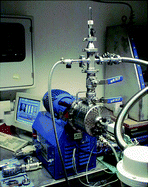Abstract
A systematic survey over the varied use of

- This article is part of the themed collections: Reactions in molecular solids and host–guest systems and Editor’s Collection: Mechanochemistry
* Corresponding authors
a
University of Oldenburg, Diekweg 15, D-26188 Edewecht, Germany
E-mail:
gerd.kaupp@uni-oldenburg.de
A systematic survey over the varied use of

 Please wait while we load your content...
Something went wrong. Try again?
Please wait while we load your content...
Something went wrong. Try again?
G. Kaupp, CrystEngComm, 2011, 13, 3108 DOI: 10.1039/C1CE05085K
To request permission to reproduce material from this article, please go to the Copyright Clearance Center request page.
If you are an author contributing to an RSC publication, you do not need to request permission provided correct acknowledgement is given.
If you are the author of this article, you do not need to request permission to reproduce figures and diagrams provided correct acknowledgement is given. If you want to reproduce the whole article in a third-party publication (excluding your thesis/dissertation for which permission is not required) please go to the Copyright Clearance Center request page.
Read more about how to correctly acknowledge RSC content.
 Fetching data from CrossRef.
Fetching data from CrossRef.
This may take some time to load.
Loading related content
